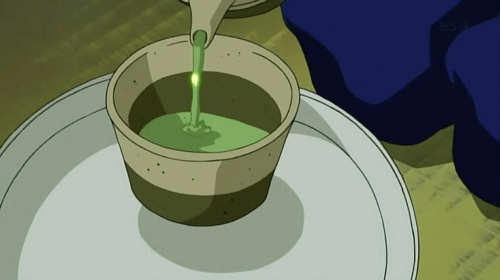 Let me share a secret with you. I love tea. One of the greatest pleasures is reading (or writing or watching anime) with a cup of tea at hand. I’ve been known to spend a chunk on imported teas. But even the humble filter teabag available at the local grocery store can help you get in touch with thousands of years of tea history.
Let me share a secret with you. I love tea. One of the greatest pleasures is reading (or writing or watching anime) with a cup of tea at hand. I’ve been known to spend a chunk on imported teas. But even the humble filter teabag available at the local grocery store can help you get in touch with thousands of years of tea history.
I will spare you a long history of tea. Thick books have been dedicated to tea and its influence on history. But a short summary is still in order. The leaf has inspired painters, writers, poets, warriors, despots, Victorians, saints, and many others. Tea came from the forests of southern China. It is an evergreen tree that can live to be over 2,000 years old. Although, most tea comes from trees cultivated to look like bushes. There are 380 varieties of tea (Fisher, 2010). These varieties helped tea’s popularity spread. Tea traveled from China to Japan and Europe. Although most think tea arrived in Europe during the Colonel period, it arrived far earlier. The earliest appearance of tea in European writing comes from an Arab merchant in 879 (Okakura, 1906).
True tea comes from the tea tree. Herbal teas like chamomile and rooibos are not true teas. Of course, I still enjoy them and call them tea.
Tea in Anime and Japanese Culture
Those who cannot feel the littleness of great things in themselves are apt to overlook the greatness of little things in others. The average Westerner, in his sleek complacency, will see in the tea ceremony but another instance of the thousand and one oddities which constitute the quaintness and childishness of the East to him.
–Okakura, The Book of Tea 1906
When we think of tea, we think of China and Japan. Of the two, Japan is perhaps more famous as a tea nation because of its tea ceremony and the teahouses geisha entertain. Like many aspects of Japanese culture, Chinese practices were taken and adapted into something quite different. Tea is a prominent detail in anime as well. Rarely does tea become a focus, but it is offered to characters to calm them, cool them, warm them up, and other treatments. Despite having caffeine, tea is relaxing. It does cool during the summer (iced or hot oddly enough), and I love tea during cold winters.
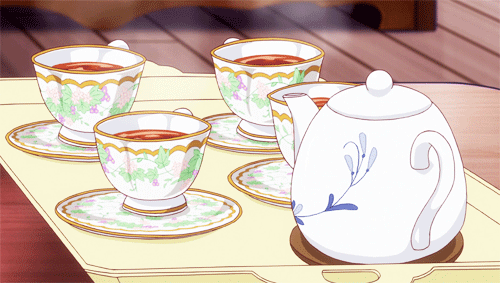
The tea anime characters offer is matcha. Matcha is a Japanese style of tea that grinds the leaves into a powder. Mix with hot water and enjoy. To be honest, I prefer the Chinese style of brewing tea: using loose leaves. I tend to make swamp water with matcha. Speaking of water, it is the most important part of tea. Chlorinated water makes terrible tea. So does hard water. Filtered or good spring water make the best tea. The best, most expensive tea will taste terrible with heavily chlorinated tap-water.
Types of Tea
Tea comes in a few families: white, green, oolong, and black. But how can a single tree make 380 types of tea? The time tea is picked, the amount of light the tree receives before being picked, and even location impacts the flavor of tea. Oxidation shifts the flavor as well. Oxidation makes iron rust and apples turn brown. As tea oxidizes, it changes from green to black. Flavor becomes earthier and richer. White teas have delicate flavors because they are made from new leaves and dried without aging (oxidizing). Silver Needle is a wonderful white tea, but it can taste like barely flavored warm water to many people. People who favor strong flavors may not be able to taste white tea.
Green Tea
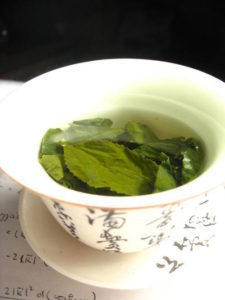 Green tea involves aging mature tea leaves, but green tea isn’t aged as long as black or oolong. The different varieties come from when they are picked and how they are aged. For example, one of my favorites is Jasmine Green Tea. This tea is aged in rooms that contain jasmine flowers. The tea absorbs the scent and flavor of the flowers. The jasmine scent and flavor relaxes like few other teas can. The aging method complete shifts the flavor of tea. The shape of the tea leaves also impacts the flavor. For example gunpowder tea, which looks like old fashioned black gunpowder pellets has a different flavor than flat-leaf tea. The amount of surface area the leaf has changes how the water absorbs the flavor. Gunpowder slowly unrolls as it heats, allowing the flavor to gradually flow into the water.
Green tea involves aging mature tea leaves, but green tea isn’t aged as long as black or oolong. The different varieties come from when they are picked and how they are aged. For example, one of my favorites is Jasmine Green Tea. This tea is aged in rooms that contain jasmine flowers. The tea absorbs the scent and flavor of the flowers. The jasmine scent and flavor relaxes like few other teas can. The aging method complete shifts the flavor of tea. The shape of the tea leaves also impacts the flavor. For example gunpowder tea, which looks like old fashioned black gunpowder pellets has a different flavor than flat-leaf tea. The amount of surface area the leaf has changes how the water absorbs the flavor. Gunpowder slowly unrolls as it heats, allowing the flavor to gradually flow into the water.
You do not boil water when you make white or green teas. It makes them bitter. Steep these teas for about 2 minutes in water that is just a few minutes from boiling. The easiest way to know when is to heat the water in an open pot. When you see bubbles form on the bottom of the pot, its time for tea!
Black,Oolong, and Red Tea
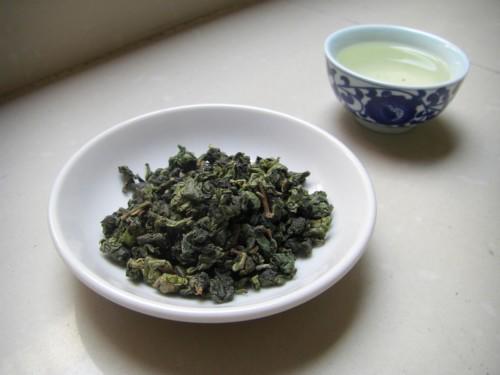
Black and oolong teas are rich teas. Some types are more like coffee than tea. I like to sweeten these teas with honey, but sugar will work too. Some, like Indian Chai, need to be sweetened and mixed with milk. Indian Chai takes black tea and mixes it with spices like black pepper, cinnamon, cloves, and other goodies. I didn’t like chai with milk, but you should give it a try. Black teas require boiling water and longer steeps than green tea. About 3-5 minutes.
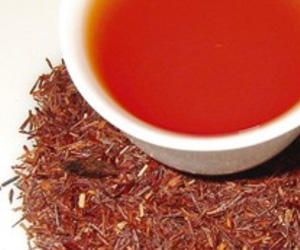
You won’t see this tea (it’s not a true tea) in anime, but rooibos needs a little attention. Rooibos comes from a shrub in Africa. When steeped, it turns the water a deep red, similar to the red rose tea creates. It has a flowery flavor that goes well with honey. Like other herbal teas, you can boil the water. Rooibos (pronounced roy-boss) requires long steeps of 5-10 minutes.
Tea Sets and other Tips
You don’t have to have a Japanese tea set to enjoy a cuppa. You can buy single-serve strainers for loose leaf teas. They come in various styles. If you are making green or black tea, you can usually get two cups out of one strainer-full of leaves. White teas are too delicate for more than one cup. Green teas can be made into iced tea during hot summer months. Pro tip: fresh mint from the garden makes excellent black or green iced tea.
Tea grows bitter with long steeps or boiling water. If you like bitter flavors, boil the water and steep for a longer time. I like some green teas on the bitter side. Luckily, you can cut bitter flavors with sugar or honey. I prefer honey.
Speaking of honey, honey comes in many types including orange blossom and the common American clover honey. Each will change the flavor of tea. Sometimes for the better, other times the flavors will compete. Honey can completely overpower white tea. Luckily, white tea has natural sweetness. Experiment and find what works best for you. Just know many tea-lovers think adding sugar or honey to tea is sacrilegious. I am not one of those. After all, I am an American with a sweet-tooth. But don’t sweeten a tea without tasting it without sweetener. Artificial flavors and the proliferation of sugar has ruined our sense of taste. Natural flavors tend to be subtle, and this is especially true with tea. Many teas have flowery or sweet after-taste that sweeteners mask. Many of us will have to retrain our tastebuds to notice these subtle flavors.
Tea is one of the simple pleasures in life that improves health and well-being. While it is often a background element in anime, tea reminds us that that anime has a place in tea literature. We could even say tea has inspired the poetry and literature that led to anime. Each cup of tea connects us with Japanese and Chinese culture. We are truly fortunate to enjoy a small part of tea culture and its long history.
References
Okakura,K. (1906) The Book of Tea.
Fisher, A. (2010). The Way of Tea. Vermont: Tuttle Publishing.
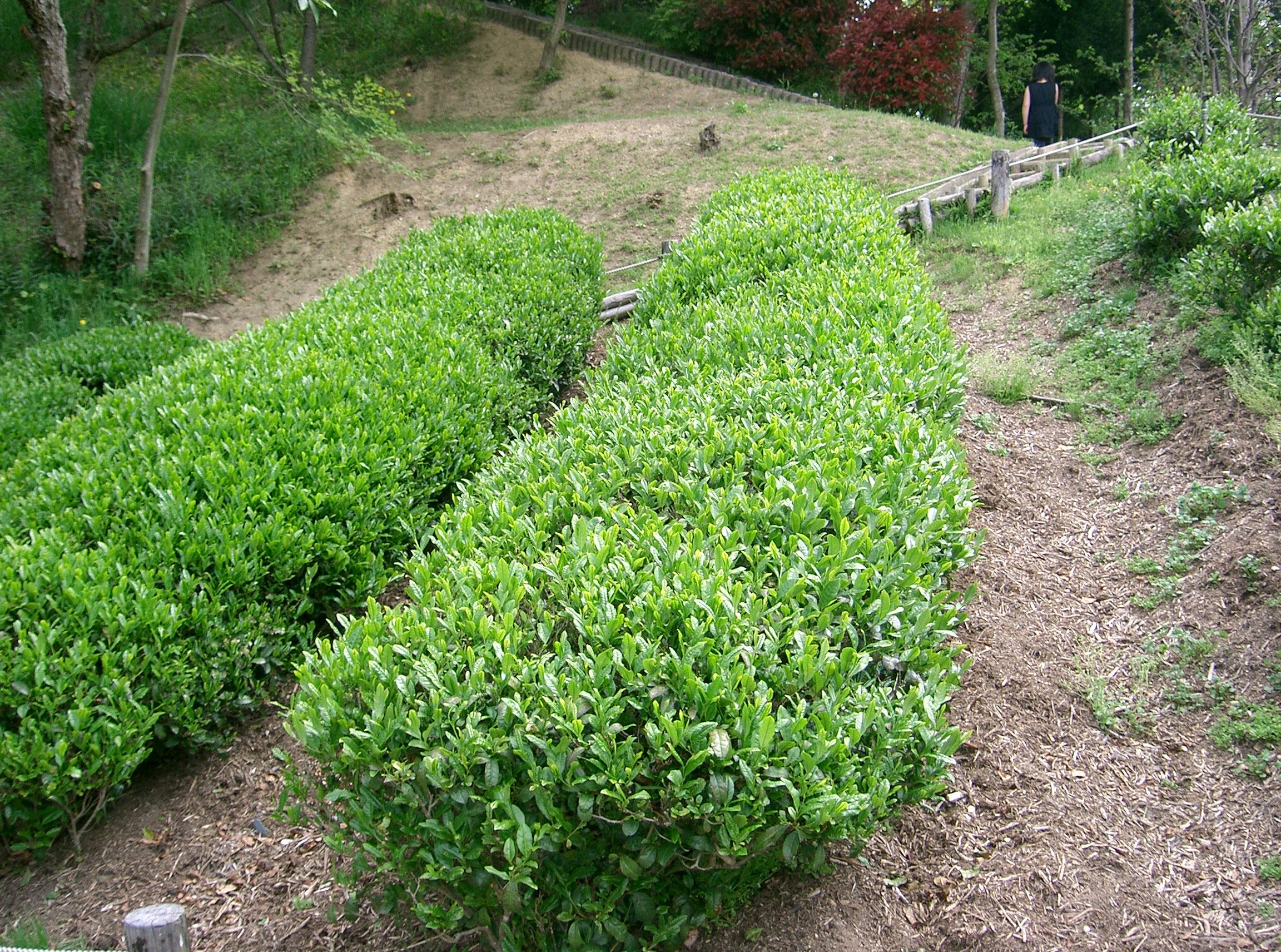
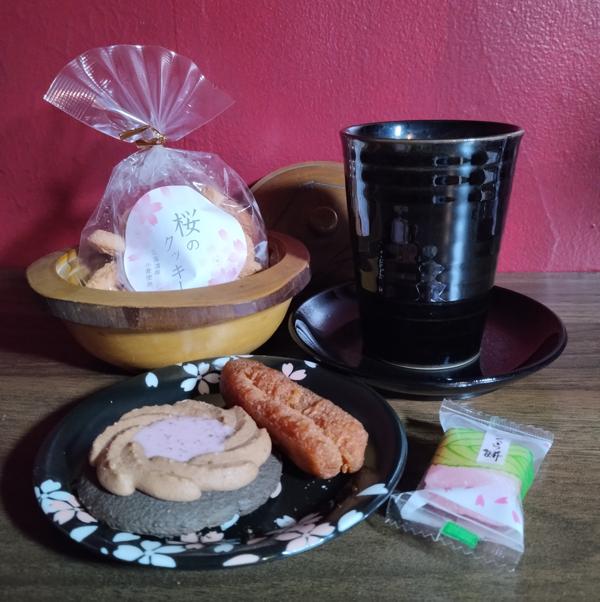
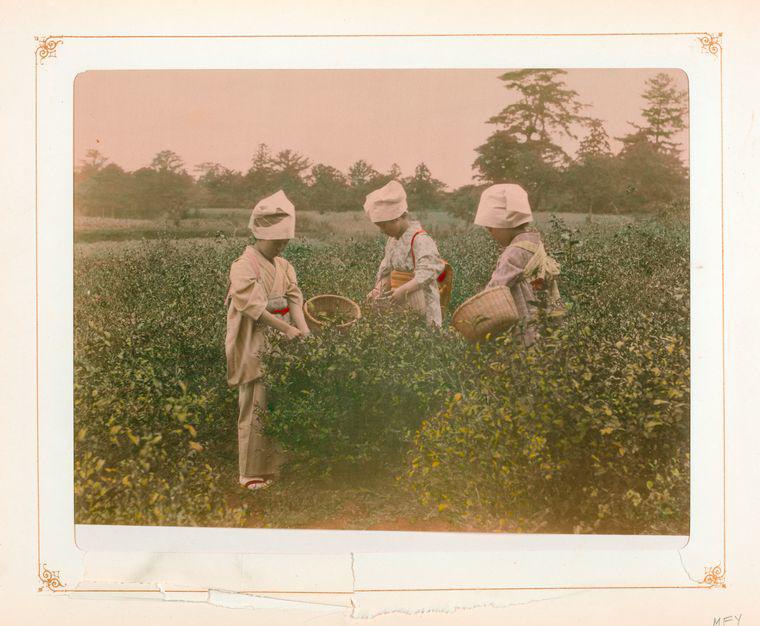
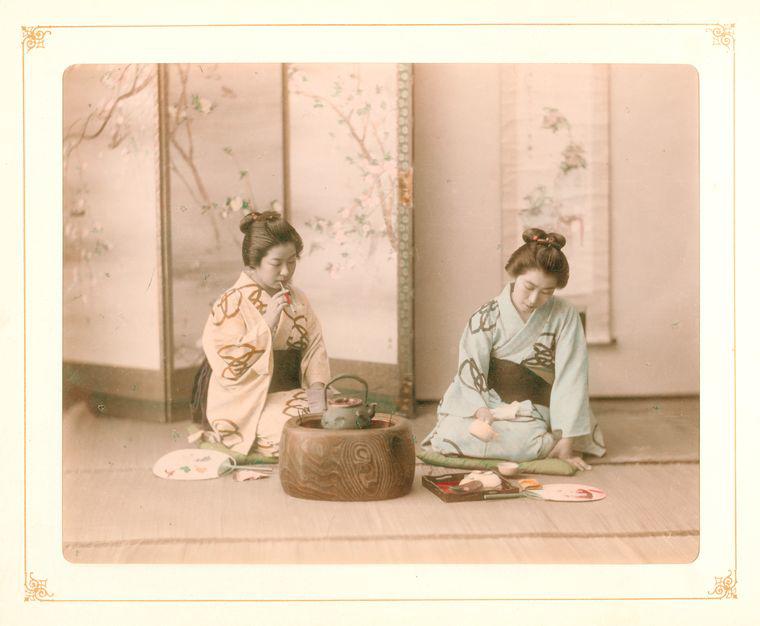
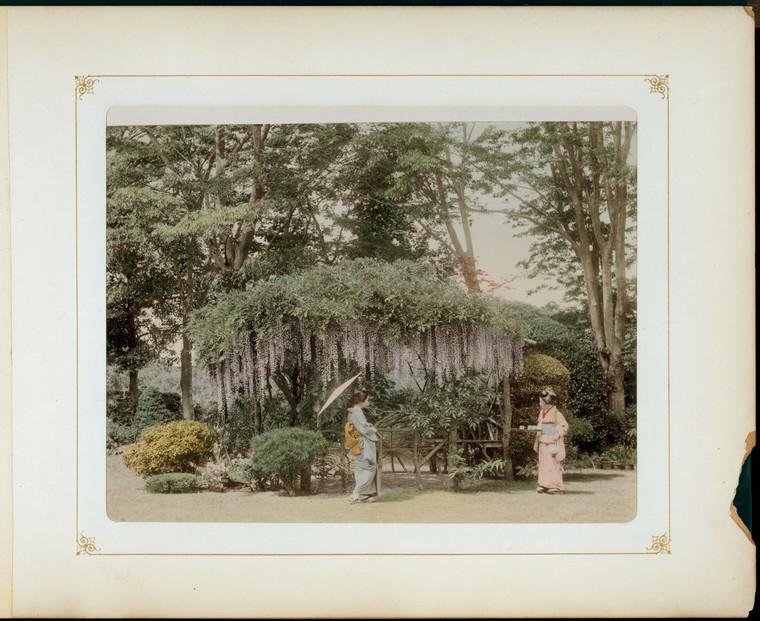
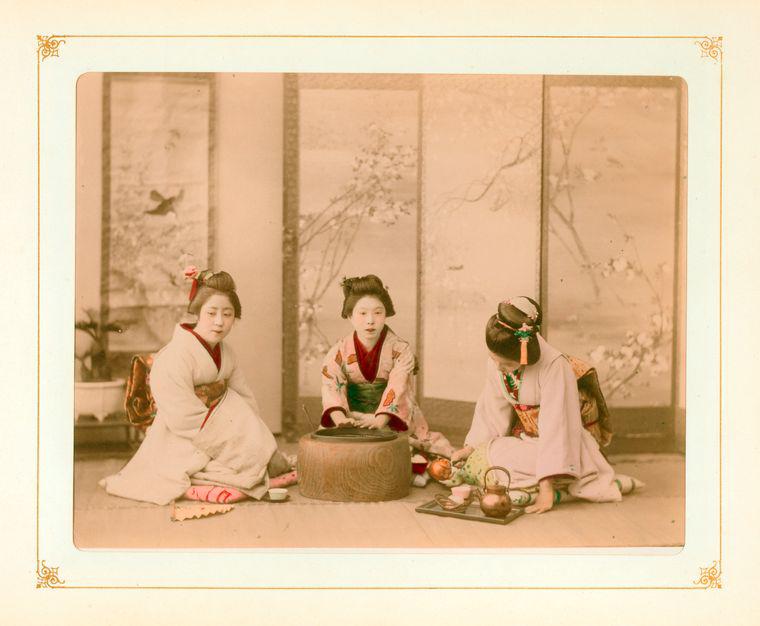
Hi
I am a huge fan of your blog. I am really enjoying your posts, especially this post motion Japanese tea sets
Very detailed and valuable information. It helps me a lot.
I am the owner of Umi Tea Sets Store. I am Chinese. Our store has many exquisite Chinese tea sets, I am doing a research about Chinese tea sets and planing to promote my content. Can you just add a link to the word “Japanese tea sets” in your post and link to my content? And i will picked a handmade genuine Chinese tea set sent to you as gift, it is totally free, hope you can accept my first gift, and hope we can become friend.
Thanks for your time and consideration! Looking forward your reply.
Thank you again.
While your offer tempts me and I enjoy Chinese tea sets, I have to decline. I try not to advertise on this blog. I want to make a space that is mostly free of advertising. Thanks for your kind offer!
In some anime you will see tea served from a cylindrical container by pressing somewhere on the top, is this an Airpot (insulated pump action thermos) or something else?
I suspect it is a type of Airpot, made in the style of traditional tea canisters.
What anime is that from?
I lifted the tea images from Tumblr. Sadly, I couldn’t find any sources as to where they came from. I know, its poor practice to use images without sources. However, I vaguely remember seeing the green tea pouring scene from Kekkaishi.